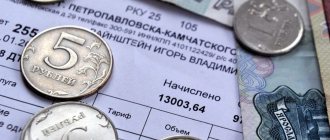What are operating costs?
Operating expenses (OC) are the current costs of ensuring the operability of fixed assets throughout their entire service life. Current expenses refer to production and sales costs. They will vary depending on the specifics of the organization's activities. For example, if it is a railway entity, funds are spent on transporting goods, passengers, and various luggage. There are operating costs for ensuring fire safety.
The purpose of spending is to fulfill the set goal. For example, a railway company needs to transport cargo. This requires investing in fuel, wages, maintenance, and electricity. The amount of expenses is determined by the volume of equipment used, time of use, and specific costs per hour of operation.
What is the procedure for determining the maximum amount of expenses for production and sales ?
Composition of operating costs
Let's look at the composition of operating costs:
- Depreciation of equipment and vehicles. Depreciation will be taken into account when it is calculated using the straight-line method. Within the framework of this method, the entire period of operation of the facility is considered.
- Maintenance and repair of equipment.
- Public utilities. This refers to the amount written off from the company's profits.
- Ensuring the operation of auxiliary production responsible for equipment maintenance.
- Salaries, spending on social needs. Includes earnings of all employees, including part-time employees.
- Expenses for internal transportation of materials and goods.
- Costs associated with the operation of equipment.
- Tax deductions. This is a tax on wages or real estate, if the latter is included in the operating system.
- Materials. This refers to expenses for acquisition and transportation. These costs are included in the cost of production.
- Spare parts. They are included in the list only if they relate to the needs of the main production.
These may also be other expenses, depending on the specifics of the enterprise’s activities. The specific composition is determined by the head of the enterprise. Let's look at the cost structure using the example of entities involved in the production of hydrocarbons:
- Salaries for security guards of fixed assets.
- Earnings for consultants.
- Expenditure on preparing reports on the status of funds.
- Cost of services for assessing the impact of natural resource extraction on the environment.
- Maintenance of equipment, installations, various structures.
- Purchasing licenses.
- Fixed asset monitoring services.
- Carrying out geological and environmental research, cartography.
- Environmental research.
- Reclamation of natural elements that have been disturbed.
- Decommissioning of the site for which the license was obtained.
- Storage, waste disposal.
This is the main list. The composition may also include other areas of spending.
Classification
Operating costs are divided into these categories:
- Basic. These are expenses related to the main activity. For example, this could be money allocated directly to the transportation of goods. This also includes expenses for repair work, employee accruals for unworked time, discounts on products, and social charges.
- General economic. These are expenses for production services and household management. Expenses without expenses for the maintenance of the management structure include employee salaries, maintenance of buildings, maintenance of premises and equipment. This is also depreciation of fixed assets, deductions to the reserve for the formation of a repair fund, and the execution of research work. Expenses for servicing the management apparatus include travel allowances and salaries of management staff.
- Direct. These are the costs of producing products or performing any service.
- Indirect. Determined through additional calculations. Distributed between different types of products.
- Motion dependent. These costs vary in proportion to the scale of the work.
- Independent of the scale of movement. They practically do not change when the volume of work changes. These are constant expenses.
The classification may depend on the specifics of the company's activities. Let's consider grouping expenses by characteristics using the example of an entity that deals with railways:
- Transportation.
- Maintaining infrastructure in good condition.
- Purchase of locomotive traction services.
- Passenger Transportation.
- Repair of rolling stock.
In the above case, the grouping is carried out according to these characteristics: areas of work, enlarged forms of activity, articles of the Nomenclature.
What are allocated operating costs ?
Results
The legislation regulating accounting divides all expenses of an enterprise into two large groups: those associated with ordinary activities and other expenses. Expenses associated with ordinary activities are divided into elemental groups. And the enterprise chooses the grouping of expenses by cost items independently. The main and additional lists of cost items form a complete list of enterprise costs.
Read about the procedure for accounting for certain types of costs in the materials in our section “Accounting in 2020-2021 (rules, methods).”
Sources:
- PBU 10/99, approved. by order of the Ministry of Finance of Russia dated May 6, 1999 N 33n
- chart of accounts, approved by order of the Ministry of Finance of the Russian Federation dated October 31, 2000 No. 94n
You can find more complete information on the topic in ConsultantPlus. Free trial access to the system for 2 days.
Operating cost planning
The development of an ER plan depends on the type of organization. For example, the expenditure plan of a railway company is formed on the basis of a transportation plan, a labor plan and the use of rolling stock. The purpose of planning is to provide current activities with the required amount of funds. If the plan is not drawn up correctly, the funds may not run out on time. Because of this, the company's activities will be suspended. The company will lose profit. Planning is carried out according to cost items. The event takes into account various standards and limits.
Planning is a component of energy management. However, this is not the only element. ER management also includes spending analysis, control over them, and updating the regulatory framework. The planning procedure is divided into a number of stages.
Labor costs
Labor costs usually make up the largest portion of the ER. The salary fund is formed based on the number of employees and the average salary. The number of workers is determined by three methods:
- According to production and time limits.
- By volume of production facilities and labor limits per facility.
- By the number of business units, staffing.
The average employee salary includes salary, bonuses, interest, and additional payments.
The wage fund is the product of average monthly wages and the number of workers. It is necessary to take into account the number of employees present, as well as the number of employees who are on vacation or sick leave.
IMPORTANT! Sick leave payments will not be included in the salary fund. This is due to the fact that these funds are paid not by the employer, but by the health insurance fund. Travel allowances, compensation for unused vacation, and bonuses for know-how will also not be taken into account.
Social Security contributions
The employer is obliged to allocate funds to various funds. These are pension, social, and medical contributions. They make up 34% of the total wage fund. In some cases this ratio may change.
Material costs
Spending on materials is planned depending on the company's activities. Let's consider planning methods using the example of an entity specializing in railways:
- According to the volume of equipment work and the standards of spending per unit of work volume. For example, lubricant consumption is determined based on the total mileage of locomotives for consumption standards and work plans.
- According to consumption standards for one equipment. For example, the consumption of materials is determined based on the length of the route and the number of turnouts.
- Based on the norms of raw material consumption per employee. This method is suitable for establishing expenses for workwear and tools (for example, hand-held flashlights).
- According to the number of production units and material consumption standards for each structural enterprise.
As a rule, several methods are used for planning. It all depends on what exactly needs to be calculated.
Utility expenses
The main source of expenses is electricity. The railway entity also needs to take into account the fuel needed to transport goods and the costs of technological needs. Fuel costs are determined based on the number of equipment and its power. As part of the calculations, the following aspects must be taken into account:
- Features of using equipment.
- Fuel consumption rates per unit of power.
- Duration of operation of equipment in the period under review.
- Cost of energy per kilogram of standard fuel.
Energy consumption for lighting is determined based on the number of lighting fixtures, their power, burning hours, and the cost of kW of energy.
FOR YOUR INFORMATION! An entrepreneur can reduce energy consumption. To do this, it is necessary to increase the quality of operation, improve technological processes and quality values of use.
Depreciation deductions
Depreciation is the wear and tear on equipment. It can be physical or mental. The first involves deterioration of characteristics during long-term operation. Physical wear and tear is determined based on the intensity of use, the quality of the materials used, the quality of repair work and maintenance. Obsolescence is the loss of equipment relevance. This happens due to the appearance on the market of new, more advanced technology. Wear standards are determined based on specific equipment.
Depreciation charges are included in operating costs. This is due to the fact that the formed depreciation fund is used to restore worn-out equipment. When making calculations, it must be taken into account that depreciation charges will be uniform throughout the entire period.
FOR YOUR INFORMATION! The calculations usually include not the duration of operation, but the deduction rates.
Reflection of costs for managing apartment buildings on account 26 “General expenses”
We will not be mistaken if we say that this method is used by many management companies that put the costs of maintaining and repairing common property at account 20, and the costs of managing apartment buildings at account 26.
Putting expenses into account 26 is half the battle. But then the real puzzle begins, where to put the expenses collected in this account. According to clause 9 of PBU 10/99 “Expenses of the organization” and the Instructions for using the chart of accounts (Order of the Ministry of Finance of the Russian Federation No. 94n dated October 31, 2000), costs for management services for apartment buildings, which are reflected in account 26 “General business expenses,” can be monthly write off in 2 ways:
- as conditionally constant - Dt 90-2 “Cost of sales”;
- in the cost of work or services - Dt 20, 23, 29.
These expenses in this way can only be written off for the management of apartment buildings, but not for the maintenance and repair of common property and for utilities .
The cost of utility services for consumers must necessarily be equal to the cost of their acquisition (clause 38 of the Rules for the provision of utility services, approved in the RF Regulation No. 354 of 05/06/2011). If 1 cubic meter of water was purchased for 100 rubles, then it can only be sold for 100 rubles. It is impossible to increase the share of expenses from account 26 “General business expenses” from above, since the cost of acquisition and sale of utility assets will not match.
If we turn to judicial practice in the field of application of benefits under paragraph 30, paragraph 3 of Article 149 of the Tax Code of the Russian Federation, then in the overwhelming majority of cases the courts believe that operations for the sale of work/services for the maintenance and repair of common property in apartment buildings are exempt from VAT. a cost equal to the cost of their acquisition from the RSO (Resolution of the Federal Antimonopoly Service of the Volga-Vyatka District dated June 18, 2014 in case No. A17-2773/2013).
If you write off the cost of management services from account 26 “General expenses” to the cost of services for the maintenance and repair of common property, you will get the difference due to distributed management costs. In this case, tax inspectors will be able to reasonably present claims to the management company. It turns out that from the point of view of housing legislation, coupled with the Tax Code, this approach may cause criticism from the tax authorities.
Since MKD management is the main activity of the management company, expenses for this item should be formed on account 20 “Main production”. At the same time, account 20 has advantages for reflecting the costs of managing apartment buildings over the usual way of reflecting these expenses on account 26. Therefore, it still makes sense to reflect expenses correctly in accounting.
Let's list these advantages:
- the costs of managing a specific apartment building can be reflected on the account without reference to methods of distribution of expenses depending on the area of the apartment building, the wage fund and other criteria;
- savings on VAT. If the company’s accounting policy recognizes the management of apartment buildings as a separate service, then there is no need to divide the incoming VAT on work and services purchased for the purposes of managing the house into taxable and non-VAT-taxable transactions (clause 4 of Article 170 of the Tax Code of the Russian Federation). All VAT on the MKD management service can be deducted, since it is subject to VAT in full.
Operating Cost Accounting
The main task of electronic accounting is timely, complete and objective recording of expenses. With the help of accounting, you can control expenses, introduce savings mode and reduce costs. ER are determined in accordance with a pre-drawn plan. Forming a plan involves justifying the amount of each type of expenditure.
Let's look at the additional functions of ER accounting:
- Tracking the implementation of the plan.
- Reduced operating costs.
- Search for specific areas of savings.
- Preventing unnecessary spending.
- Increasing the efficiency of the enterprise.
Accounting must be maintained in such a way that complete information about expenses can be extracted from it.
Question: How can a tenant take into account reimbursement under a lease agreement for utility payments: electricity costs and other operating expenses? View answer
Cost accounting for apartment building management services
Since September 1, 2014, in Article 162 of the Housing Code of the Russian Federation, management services have been allocated as a separate category. And this is quite justified, since clause 3 of the Rules for the Management of Apartment Buildings states that the Management Company carries out management of each individual apartment building. According to this definition, each individual apartment building is considered as an independent management object.
Therefore, management services are the main activity of the management company, similar to the service for the maintenance and repair of common property in apartment buildings . Consequently, expenses for management services for apartment buildings should be reflected on account 20 “Main production”, and not on account 26 “General business expenses”.
After all, in essence, a management company enters the housing and communal services market to manage apartment buildings. This is the source of income for the management company. Therefore, she must do everything that is specified in the management agreement with the owners of the premises in the apartment building in relation to the performance of work and the provision of utilities for the proper maintenance of the common property in the house.
If we carry out a comparative classification of the works and services of a management company, then priority management services will take the most honorable place among all others.
It is logically incorrect to place the costs of managing apartment buildings on account 26 “General business expenses.” Since the Instructions for using the chart of accounts (Order of the Ministry of Finance of the Russian Federation No. 94n dated October 31, 2000) states that “Account 26 “ General business expenses ” is used to summarize information about the expenses of the management company for management needs not directly related to the production process.
Account 26 “General business expenses” can be used if the management company, in addition to managing the apartment building, is also engaged in other types of activities not related to management. In this case, the costs of managing the management company will be accumulated on account 26, and then distributed to the corresponding sub-accounts to account 20 according to the share of revenue from each type of activity.
All of the above are the rules for maintaining separate VAT accounting for taxable and non-VATable works and services and serve as the basis for the formation of the accounting policy of the management company.
“ADS 100%” for November 10: selection of service provider and topic of appeal
7450 .
Classification and correct reflection in accounting
Accounting is organized on the basis of a correctly developed classification. She also participates in planning and controlling expenses. Let's consider the main features of accounting:
- Packaging costs can be taken into account in a separate account No. 43 only if it is an industrial entity where the products are manufactured. These are non-production expenses. If this is a subsidiary enterprise, a separate account is not used. Expenses are recorded in accounts 46 “Sales” or 47. The expenses in question will also not be reflected separately in the reporting.
- Expenses for maintaining warehouse staff are included in production costs. This also includes expenses for maintaining warehouses of products and attached funds.
- For expenses on maintenance and management, you need to create a separate estimate. An accountant should monitor it. As part of synthetic accounting, expenses are recorded either in a single account or in separate accounts. For accounting, you can use account 11 or 26. After recording, expenses are distributed by type of product.
- Accounting for direct costs is carried out according to costing areas.
- Employee salaries are reflected in account 70.
- A separate certificate is created for social insurance expenses. It reflects the accrual amounts determined on the basis of the statement and the distribution of salaries across synthetic accounts. The final data is recorded in the accounting certificate. It assumes correspondence with a score of 69.
IMPORTANT! Synthetic accounting reflects total expenses. That is, they are not divided by cost areas. An SU is needed to reflect the total amount of ER. Analytical accounting involves detailed recording of expenses. It is needed to monitor compliance with the plan in certain areas. The organization of these forms of accounting is determined depending on the method of accounting: manual or using computers.
ATTENTION! The accountant must also draw up an expense distribution sheet. It is formed by grouping expenses into synthetic accounts.
General business (general operating) expenses
Such expenses include expenses for management needs not directly related to the production process. If the structure of the enterprise is not built on a workshop principle, but general production expenses are planned for the enterprise as a whole, then account 26 is used to reflect expenses.
Analytical accounting for account 26 is carried out for each item of general business expenses estimates and the location of costs.
Table 5.2 presents general operating expenses.
Table 5.2
| № | Articles | Characteristics and content of expenses |
| PP management costs | ||
| 1. | Salary of the PP management staff | Salary with social security contributions for management personnel |
| 2. | Business trips and relocations | Expenses for all types of business trips of management employees, expenses and expenses for the movement of these employees and members of their families. |
| 3. | Maintenance of fire, paramilitary and security guards | Salary of watchman, fire and security personnel and social security contributions. insurance, amounts paid to other organizations for security |
| 4. | other expenses | Office, telephone expenses, cost of reporting forms, costs of maintaining telephone exchanges, dispatch communications, buildings and premises of the plant management (heating, lighting, water supply, routine repairs and cleaning); |
| 5. | Deductions for the maintenance of higher organizations | |
| General running costs | ||
| 6. | Contents of other general facilities. personnel | Salaries of non-managerial plant personnel and social insurance contributions |
| 7. | Depreciation of fixed assets | OS of a general plant nature |
| 8. | Maintenance and current repairs of buildings, structures and equipment | Expenses for maintaining all general operating systems in good working order; the cost of lubricants and cleaning materials, salaries and social contributions. insurance for workers serving warehouse operations and storekeepers, rent for buildings and premises; fuel costs, energy costs; for current repairs of buildings |
| 9. | Production tests | |
| 10. | Occupational Safety and Health | Labor safety costs (non-capital): safety costs, industrial sanitation costs |
| 11. | Personnel training | Expenses for on-the-job training to prepare new workers (payment to teachers for lectures, costs for the purchase of teaching aids, payment of scholarships to successful students sent to study at universities and technical schools). |
| 12. | Organized labor recruitment | |
| 13. | other expenses | Expenses for the maintenance of duty transport and special vehicles. destination (except for official cars). |
| 14. | Taxes, fees | State duties, payments for maximum permissible emissions of pollutants |
| Factory overhead expenses | ||
| 15. | Downtime losses | The amount of workers' wages due during downtime and social security contributions. insurance; the cost of raw materials, materials, fuel and all types of energy consumed during the period of production shutdown. |
| 16. | Losses from spoilage of inventories during storage in factory warehouses | |
| 17. | Shortage of materials in factory warehouses | |
| 18. | other expenses | Payment of legal costs and arbitration fees, fees for overconsumption of electricity and gas limits. |
During the month, all general business expenses are collected on the debit of account 26 from the credit of accounts 02.05, 10, 21, 23, 43, 60, 68, 69, 70, 71, 76, 97.
At the end of the month, minus returns (D 10 K 26), they are distributed and included in the costs of main or auxiliary production (D 20, 23 K 26). The distribution base is chosen by the enterprise (as for overhead costs).
It is allowed that expenses are not charged to the accounts of production costs, but are immediately written off to sold products (work, services): D 90 K 26. Between types of products, general business costs are distributed in proportion to sales revenue.
At the end of the month there is no balance on the 26th account.
Reimbursement of operating costs
Reimbursement of expenses is relevant if the entrepreneur rents premises. He is obliged to compensate the landlord for the costs of services. It is recommended to reflect expenses for reimbursement of electronic equipment under expense item 244 “Other purchases”. To process compensation, you must either include payments in the rental amount, or draw up a separate agreement for compensation.
Question: How to reflect in the accounting of the lessee organization the costs of operating a leased vehicle (fuels and lubricants), made in accordance with the lease agreement, if these costs are paid in cash through an accountable person (employee of the organization)? View answer
Accounting policy of the management company
Since 2015, in order to comply with the Information Disclosure Standard (RF Government Decree No. 731), management companies must keep separate records of income and expenses. This is necessary in order to correctly reflect the required data in the annual report of the management company.
What documents should the MA as a personal data operator have?
33800 .
Therefore, it makes sense to specify in the accounting policy of your management company the rules for maintaining separate accounting of income and expenses. We hope that our article helped you with this.
If you have any questions, you can always contact us for advice. We also help management companies comply with 731 Russian Federation Regulations on the Information Disclosure Standard (filling out the Housing and Communal Services Reform , management company website, information stands) and Federal Law No. 209 ( filling out the Housing and Communal Services GIS ). We are always happy to help you!




